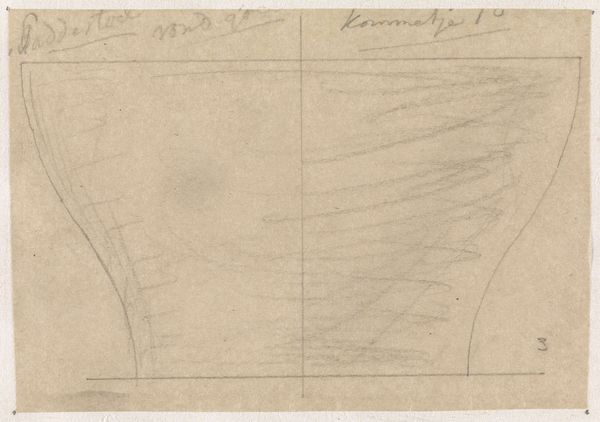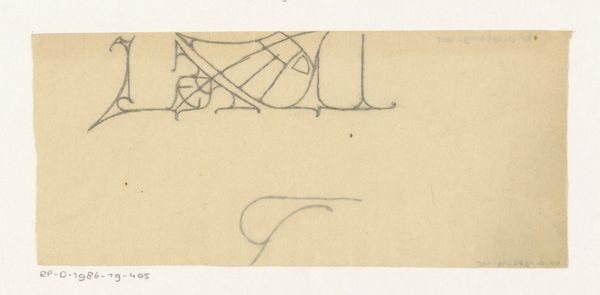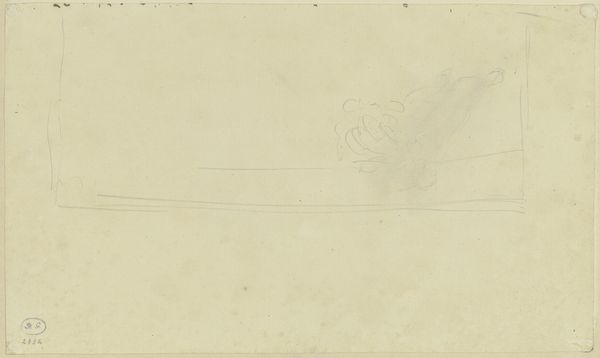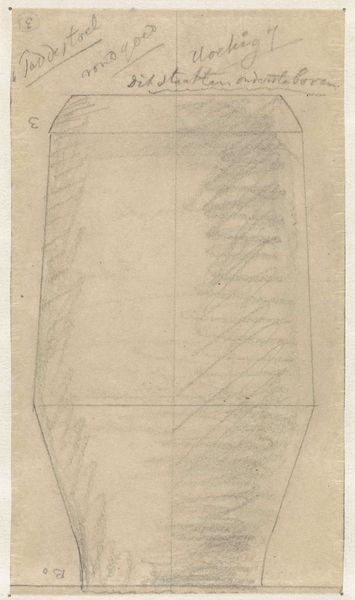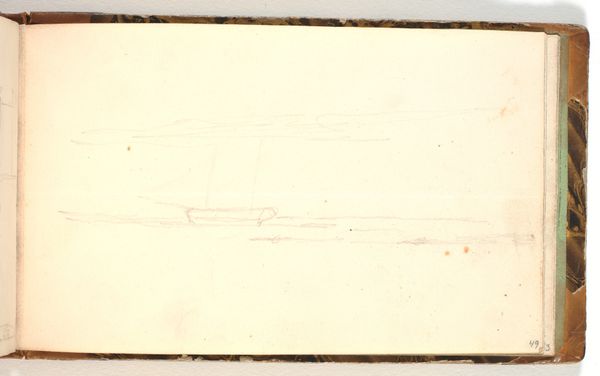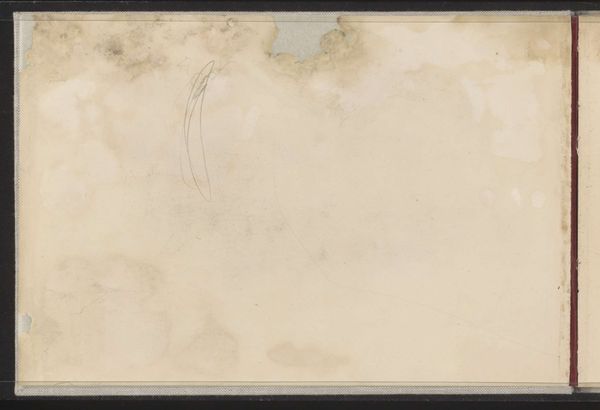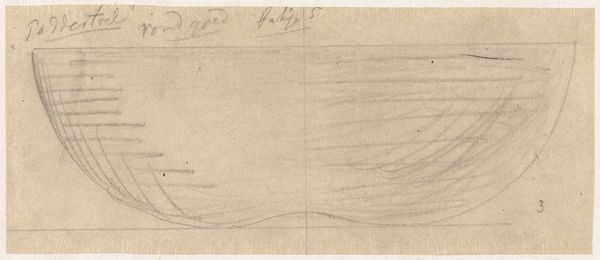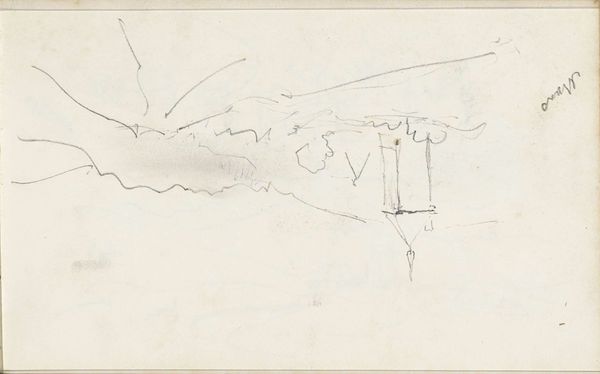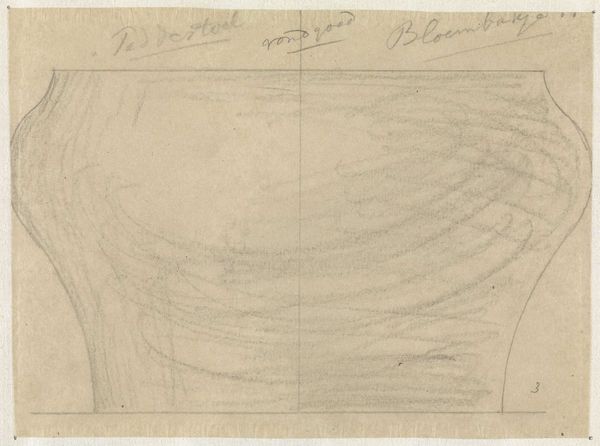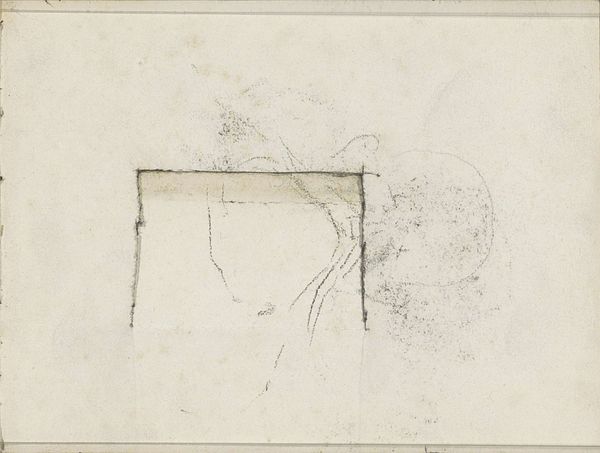
drawing, paper, pencil
#
drawing
#
amateur sketch
#
toned paper
#
light pencil work
#
pencil sketch
#
old engraving style
#
hand drawn type
#
paper
#
personal sketchbook
#
geometric
#
pen-ink sketch
#
pencil
#
sketchbook drawing
#
sketchbook art
Dimensions: height 70 mm, width 281 mm
Copyright: Rijks Museum: Open Domain
Curator: Here we have Theo Colenbrander’s "Ontwerp voor schaaltje," or "Design for a Bowl," dating from between 1851 and 1930. It's a pencil drawing on paper, capturing a proposed form. Editor: It strikes me as surprisingly gentle, a whisper of an idea, almost hesitant. Is it meant to be quite so subdued? Curator: Perhaps that's the beauty of a preliminary sketch; it holds possibilities rather than dictates form. Think about the materiality of bowls in this period. Colenbrander would have likely considered ceramic, glass, maybe even metal. The drawing becomes a space of experimentation before the object truly takes shape. Editor: So it's less about the 'high art' object and more about the labour of imagining, iterating... How does Colenbrander’s design engage with prevalent industrial processes? Were these kinds of designs easily adaptable for mass production, or would it have always been destined for more craft-oriented creation? Curator: Good question. The sketch suggests a simple form but crafting it could have been complex. The curves are subtle, almost organic, playing against the geometrical structure. While some aspects, like the repetition implied by its symmetry, hint at possibilities for replication, the overall sensibility feels deeply rooted in artisanal processes. Editor: I suppose I read this drawing through the lens of late 19th, early 20th-century design. The emerging factories, debates around art and industry. Was he actively trying to bridge that gap, or critique it perhaps? Curator: That’s the fascinating ambiguity! Colenbrander was navigating shifting territories. There is this longing for handcrafted beauty existing alongside the push for mass production. Editor: It makes me consider what materials are ennobled through art, and what labor goes unseen. There's a whole chain of creation merely hinted at here. Curator: Indeed! We've been peering not just at the idea of a bowl, but a nexus point for design, material, and human touch. It makes you consider the hidden lives of objects all around us.
Comments
No comments
Be the first to comment and join the conversation on the ultimate creative platform.


